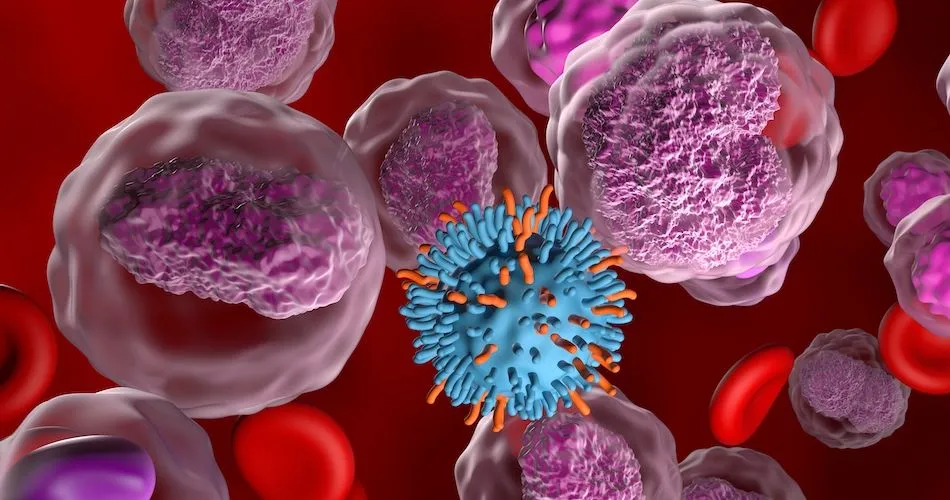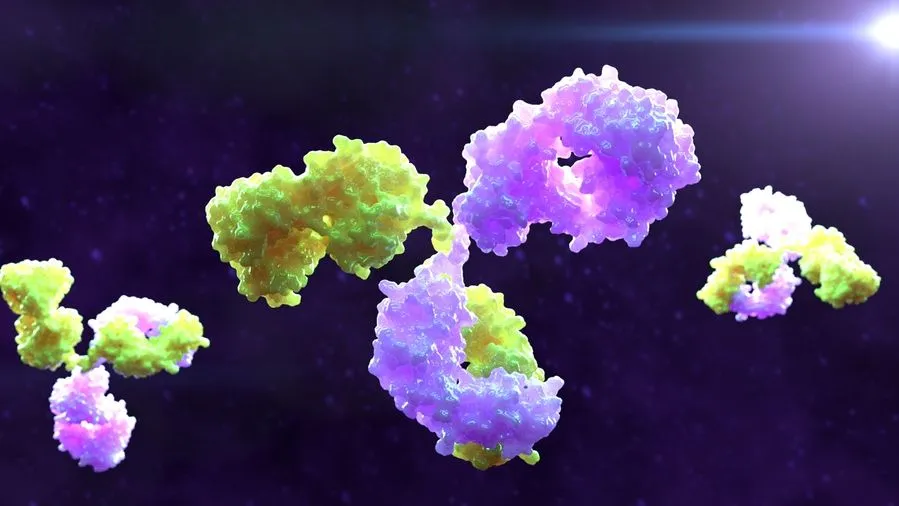A Deep Dive into CAR T-Cell vs. Bispecific Antibodies for Relapsed or Refractory DLBCL

During a recent scientific talk at Tandem 2024 in San Antonio, TX, the spotlight was on the debate between CAR T-cell and bispecific antibody therapies for relapsed or refractory Diffuse Large B-cell Lymphoma (DLBCL). Two dynamic and competitive PharmD experts, Emilie Aschenbrenner and Katie Gatwood, took center stage, with Aschenbrenner advocating for bispecific therapies and Gatwood championing CAR T-cell therapies in a presentation titled Taking a Bite out of CAR-T: Debating Use of CAR T-Cell Therapy Vs Bispecific Antibodies in Lymphoma.
With approximately half of DLBCL patients ineligible for stem cell transplant and a pressing need for novel treatments, the discussion focused on the efficacy, safety, and practical considerations of these cutting-edge therapies.
Current Landscape of CAR T-Cell Therapies
Currently, three CAR T-cell therapies are approved for DLBCL in the third-line setting, all targeting CD19. “Selecting the appropriate CAR-T option for a patient is an individualized decision based on patient-specific factors as well as treatment center capabilities and priorities.”- Katie Gatwood
- Axi-Cel (ZUMA-1):
- 5-year overall survival: 43%
- Overall response rate (ORR): 83%
- Median Overall Survival (OS): 25.8 months
- Progression-Free Survival (PFS): 6 months
- Severe Cytokine Release Syndrome (CRS) > grade 3: 13%
- Severe Immune effector cell-associated neurotoxicity syndrome (ICANS) > grade 3: 28%
- Tisa-Cel (JULIET):
- ORR: 53%
- OS median: 12 months
- PFS median: 3 months
- Severe CRS > grade 3: 23%
- Severe ICANS > grade 3: 11%
- Liso-Cel (TRANSCEND-NHL 001):
- ORR: 73%
- PFS: 7 months
- OS median: 27 months
- 2-year overall survival: 51%
- Severe CRS > grade 3: 2%
- Severe ICANS > grade 3: 10%
Axi-Cel has the greatest efficacy but with the highest toxicity. Liso-Cel presented a close second in efficacy with a safer toxicity profile.
Bispecific Antibodies
Bispecifics, targeting CD20 on tumor cells and CD3 on T-cells, offer an alternative approach.“Bispecific antibodies represent a promising new treatment strategy for DLBCL patients who are unable to receive CAR-T cell therapy or relapse post-CAR-T cell therapy”- Emilie Aschenbrenner
- Epcoritamab (EPCORE NHL-1):
- ORR: 63%
- PFS: 4.4 months
- 45% achieved MRD negativity
- CRS in 50% of patients primarily with the first full 48 mg dose Cycle 1 Day 15 (C1D15)
- One fatal case from ICANS
- Subcutaneous injection
- Glofitamab (NP30179 trial):
- ORR: 52%
- PFS: 4.9 months
- CRS in 66% primarily with the first 2.5 mg dose Cycle 1 Day 8 (C1D8)
- One fatal case from ICANS
- Fixed duration of 12 cycles, 2-4 hour infusions
- Mosnetuzamab:
- ORR: 42% in DLBCL patients
- PFS: 3.2 months
The Odronextamab trial (REGN1979) is anticipating approval soon.
Bispecifics present promising results, but data on survival and duration of therapy is still evolving.
Comparative Analysis
Similarities:
- Costs: Both therapies are comparable in cost, although the cost of CAR-T is higher upfront.
- In-patient vs. outpatient: Both can be potentially administered on an outpatient basis, depending on the infrastructure of the healthcare facility.
Differences:
- CAR T-cell strengths: Long-term survival data and duration of therapy.
- Bispecific strengths: Off-the-shelf availability, lower toxicity, and easier access.
Sequencing Considerations
The debate shifted from a winner-takes-all scenario to a focus on sequencing for relapse. CAR T-cell trials with prior antibodies maintained efficacy even with prior bispecific exposures, though noting lower response rates in patients refractory to prior CAR T-cell treatment. However, data for bispecific post-CAR T-cell therapy has yet to be collected. First-line CAR T-cell trials without prior exposures are underway, potentially offering a chemo-free option.
Conclusion:
Both CAR T-cell and bispecific therapies exhibit strengths and limitations. Given high relapse rates, the critical question becomes: What is the best sequence based on individual patient circumstances? As research evolves, the treatment landscape for DLBCL is on the brink of a paradigm shift, offering renewed hope for patients in need.
During a recent scientific talk at Tandem 2024 in San Antonio, TX, the spotlight was on the debate between CAR T-cell and bispecific antibody therapies for relapsed or refractory Diffuse Large B-cell Lymphoma (DLBCL). Two dynamic and competitive PharmD experts, Emilie Aschenbrenner and Katie Gatwood, took center stage, with Aschenbrenner advocating for bispecific therapies and Gatwood championing CAR T-cell therapies in a presentation titled Taking a Bite out of CAR-T: Debating Use of CAR T-Cell Therapy Vs Bispecific Antibodies in Lymphoma.
With approximately half of DLBCL patients ineligible for stem cell transplant and a pressing need for novel treatments, the discussion focused on the efficacy, safety, and practical considerations of these cutting-edge therapies.
Current Landscape of CAR T-Cell Therapies
Currently, three CAR T-cell therapies are approved for DLBCL in the third-line setting, all targeting CD19. “Selecting the appropriate CAR-T option for a patient is an individualized decision based on patient-specific factors as well as treatment center capabilities and priorities.”- Katie Gatwood
- Axi-Cel (ZUMA-1):
- 5-year overall survival: 43%
- Overall response rate (ORR): 83%
- Median Overall Survival (OS): 25.8 months
- Progression-Free Survival (PFS): 6 months
- Severe Cytokine Release Syndrome (CRS) > grade 3: 13%
- Severe Immune effector cell-associated neurotoxicity syndrome (ICANS) > grade 3: 28%
- Tisa-Cel (JULIET):
- ORR: 53%
- OS median: 12 months
- PFS median: 3 months
- Severe CRS > grade 3: 23%
- Severe ICANS > grade 3: 11%
- Liso-Cel (TRANSCEND-NHL 001):
- ORR: 73%
- PFS: 7 months
- OS median: 27 months
- 2-year overall survival: 51%
- Severe CRS > grade 3: 2%
- Severe ICANS > grade 3: 10%
Axi-Cel has the greatest efficacy but with the highest toxicity. Liso-Cel presented a close second in efficacy with a safer toxicity profile.
Bispecific Antibodies
Bispecifics, targeting CD20 on tumor cells and CD3 on T-cells, offer an alternative approach.“Bispecific antibodies represent a promising new treatment strategy for DLBCL patients who are unable to receive CAR-T cell therapy or relapse post-CAR-T cell therapy”- Emilie Aschenbrenner
- Epcoritamab (EPCORE NHL-1):
- ORR: 63%
- PFS: 4.4 months
- 45% achieved MRD negativity
- CRS in 50% of patients primarily with the first full 48 mg dose Cycle 1 Day 15 (C1D15)
- One fatal case from ICANS
- Subcutaneous injection
- Glofitamab (NP30179 trial):
- ORR: 52%
- PFS: 4.9 months
- CRS in 66% primarily with the first 2.5 mg dose Cycle 1 Day 8 (C1D8)
- One fatal case from ICANS
- Fixed duration of 12 cycles, 2-4 hour infusions
- Mosnetuzamab:
- ORR: 42% in DLBCL patients
- PFS: 3.2 months
The Odronextamab trial (REGN1979) is anticipating approval soon.
Bispecifics present promising results, but data on survival and duration of therapy is still evolving.
Comparative Analysis
Similarities:
- Costs: Both therapies are comparable in cost, although the cost of CAR-T is higher upfront.
- In-patient vs. outpatient: Both can be potentially administered on an outpatient basis, depending on the infrastructure of the healthcare facility.
Differences:
- CAR T-cell strengths: Long-term survival data and duration of therapy.
- Bispecific strengths: Off-the-shelf availability, lower toxicity, and easier access.
Sequencing Considerations
The debate shifted from a winner-takes-all scenario to a focus on sequencing for relapse. CAR T-cell trials with prior antibodies maintained efficacy even with prior bispecific exposures, though noting lower response rates in patients refractory to prior CAR T-cell treatment. However, data for bispecific post-CAR T-cell therapy has yet to be collected. First-line CAR T-cell trials without prior exposures are underway, potentially offering a chemo-free option.
Conclusion:
Both CAR T-cell and bispecific therapies exhibit strengths and limitations. Given high relapse rates, the critical question becomes: What is the best sequence based on individual patient circumstances? As research evolves, the treatment landscape for DLBCL is on the brink of a paradigm shift, offering renewed hope for patients in need.

about the author
Jay Hydren, PhD
I’m a clinical researcher with over 14 years of experience investigating various aspects of human health, nutrition, and physiology. My PhD encompassed the broad topics of nutrition and integrative physiology with particular focus on age-related diseases and vascular health. My most recent work focuses on accelerating a cure and treatments for Multiple Myeloma. I’m also working to improve patient experiences and decision-making processes for cancer treatment and care. To complement these critical research efforts, I enjoy hiking and skiing in Utah and surrounding states, along with training my dog and digital photography.
More on Conferences
Trending Articles
Get the Latest Lymphoma Updates, Delivered to You.
By subscribing to the HealthTree newsletter, you'll receive the latest research, treatment updates, and expert insights to help you navigate your health.
Together we care.
Together we cure.
3x Faster.








